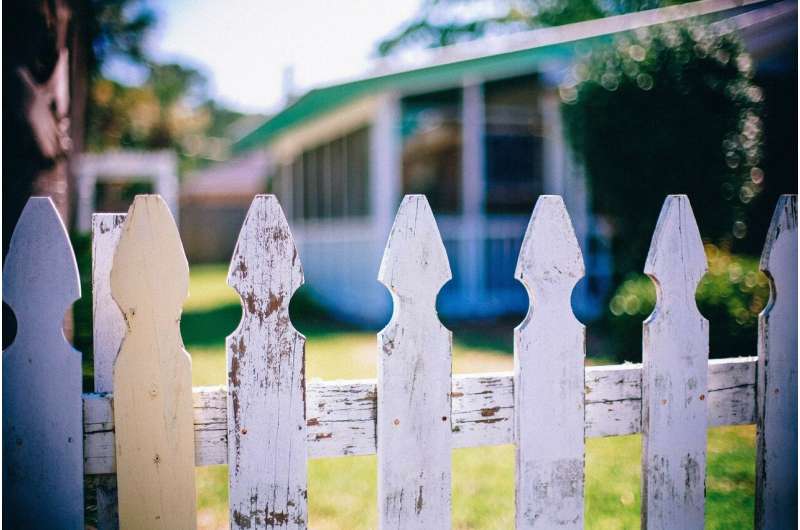Nuisance neighbors, dangerous dogs: Anti-social behaviors impact quality of life

Nuisance neighbors and problems with out of control/dangerous dogs are the anti-social behaviors which have the largest impact on quality of life, according to new research led by Nottingham Trent University.
The project explored who experiences anti-social behavior (ASB) and in what context, focusing on four themes: reporting, experience, impact and perception.
People's experience of 13 anti-social behavior categories from several years of the Crime Survey for England and Wales (CSEW) was analyzed, among other data. Along with problems with out of control/dangerous dogs and nuisance neighbors, categories included people using or dealing drugs, youths/teenagers/groups hanging about on the streets, vandalism, begging, and environmental issues such as litter, fly-tipping or dog fouling.
The latest figures from the CSEW show that, of those surveyed, 37 percent reported experiencing or witnessing some form of ASB within a 15-minute walk of their house. The NTU research highlighted the most frequently experienced ASB types were street drinking/drunken behavior; groups hanging around; inconsiderate behavior; and vehicle-related.
Certain types of ASB were more prone to repetition, including environmental; vehicle-related; begging; people using or dealing drugs; and groups hanging around.
Particular individuals and households were more likely to report experiencing or witnessing ASB. In general, when looking at all ASB types combined, younger, male, white individuals with educational qualifications who had lived in an area with higher income deprivation and higher crime risk for longer than 12 months were more likely to experience ASB. However, the characteristics of victims did vary depending upon which type of ASB was considered.
In relation to formal reporting, approximately 31 percent of ASB incidents were reported to the police, local authority or housing association/private landlord and the ASB type most likely to be reported was nuisance neighbors.
Victims were generally satisfied with the response received from the police, with the exception of some ASB types, and generally less satisfied with the response received from the local council or housing association/private landlord. As frequency of ASB occurrence increased, satisfaction with response decreased.
Dr. Becky Thompson, research lead and senior lecturer in Criminology at NTU's School of Social Sciences, said: "These findings help us to develop a better understanding of who the people experiencing ASB are and the harm caused by the incidents. Practically, the findings from this research can inform how to prevent ASB as well as how to respond to incidents. In relation to prevention, our work identifies the individuals and communities most vulnerable to ASB. With regards to response, the findings directly inform risk assessment practices at the point of report in terms of assessing the likelihood of both repeat and potential impact."
More information: Crime in England and Wales: year ending December 2018: www.ons.gov.uk/peoplepopulatio … arendingdecember2018
Provided by Nottingham Trent University




















